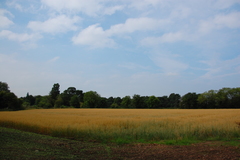Including Assets
To include assets in your content, simply type
:asset:`filename` and the asset with the given filename will be included at
that point in the content.
If the asset is an image, then the image will be shown at this point in the
content. If the asset is any other type of file, then a link from which the user
can download the asset will be shown.
For example the following inclusion of an image:
will be displayed as

Alternatively, if you link to another type of file, for example a PDF file, then the
following ReST:
Access the :asset:`notes.pdf`.
will be displayed as
Access the Notes.
By default the link’s text is taken from the asset’s title. If you want to override
this, first provide the link text and then the asset filename in angle brackets:
Access the :asset:`notes by clicking here <notes.pdf>`.
will be displayed as
Access the notes by clicking here.
Searching for Assets
If you are unsure what the exact asset filename is, then you can also search for the
asset by clicking on the Assets link on the left in the toolbox. This
will show a search box. Either type the title or filename of the asset you are looking
for into the search box and click on the Search button, or leave the
search box empty and click on the Search button to see all assets.
A list of all assets matching your search terms or of all assets will be shown below
the search box. Click on the asset’s name to have it inserted into your content at the
current cursor position.
Creating assets in the content editor
You can also create assets and immediately insert the into the content of a module, part,
or page. To do so simply drag the file you wish to add as an asset into the editor window.
This will automatically create a new asset and then insert the necessary :asset:`XX` to
link the new asset.